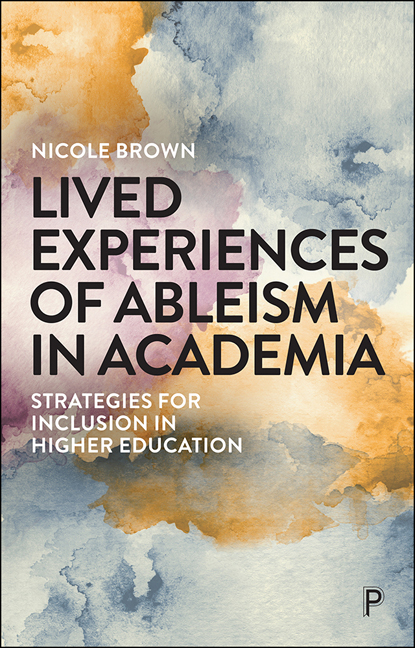3 - Embodiment and authenticity: how embodied research might shed light on experiences of disability and chronic illness
Published online by Cambridge University Press: 18 December 2021
Summary
Introduction
Embodiment as a term is becoming widely used in mainstream society, and is generally associated with the physical body in some way. However, the definition of embodiment is more esoteric. It is defined by lexicographers as ‘a tangible or visible form of an idea, quality, or feeling’ (Oxford Dictionary, 2019). As such it has no immediate connection with the physical, lived and experienced body. There are a number of theoretical positions on embodiment, and this has implications for the ways in which it is used to conceptualise lived experience. My position is that embodiment incorporates a conscious self-awareness of the information, sensations, proprioception, images, feelings and emotions that arise from the body and the mind. In this chapter I briefly explore differences of understanding and conceptualisations of embodiment, reflect on how I understand and use the concept of embodiment and embodied and how this in turn impacts on the generation of knowledge and research that gives us an insight into embodied experience. I show how this is particularly relevant for those interested in researching the experiences of those with embodied differences, such as those with disability, chronic illness or neurodivergence.
Embodiment
The term embodiment is contested (Sheets-Johnstone, 2015), and part of the battle of using the word is the need to continuously define and determine what we mean by it. For some sociologists the idea of embodiment relates to how we perform our identity, the clothes we wear, whether we choose to have tattoos, piercings, or the way that we display to others how we choose to identify ourselves within society (Evans et al, 2004). When it comes to performing our identity through our bodies, this can mean how we use ideas of discipline (Foucault, 1977) to train our bodies to be a certain way – through weight lifting, ballet training (Green, 1999) or couch-potatoing, for example. Forms such as yoga (Iyengar, 2010), dance (Green, 2003; Claid, 2016) and martial arts (Ralston and Ralston, 2006) train and discipline our bodies in different ways, and can be used to bring awareness to how we use them in space, as well as increase physical qualities such as strength and flexibility.
- Type
- Chapter
- Information
- Lived Experiences of Ableism in AcademiaStrategies for Inclusion in Higher Education, pp. 53 - 72Publisher: Bristol University PressPrint publication year: 2021



